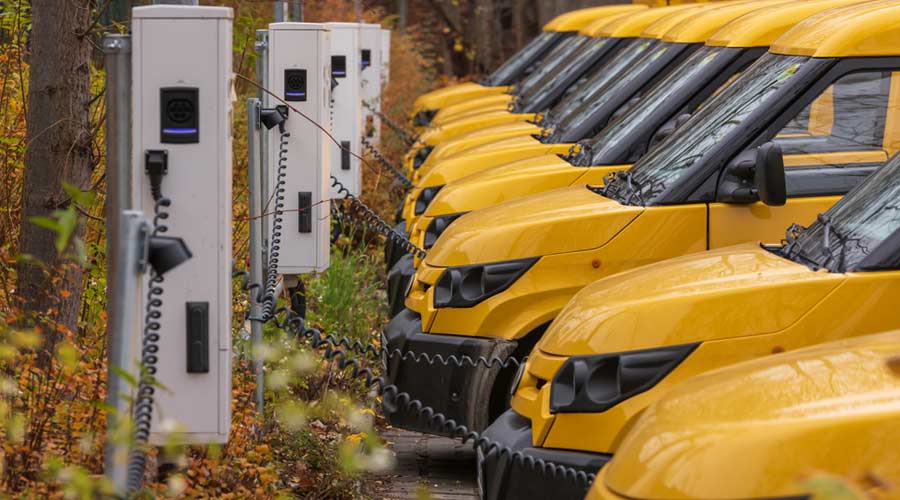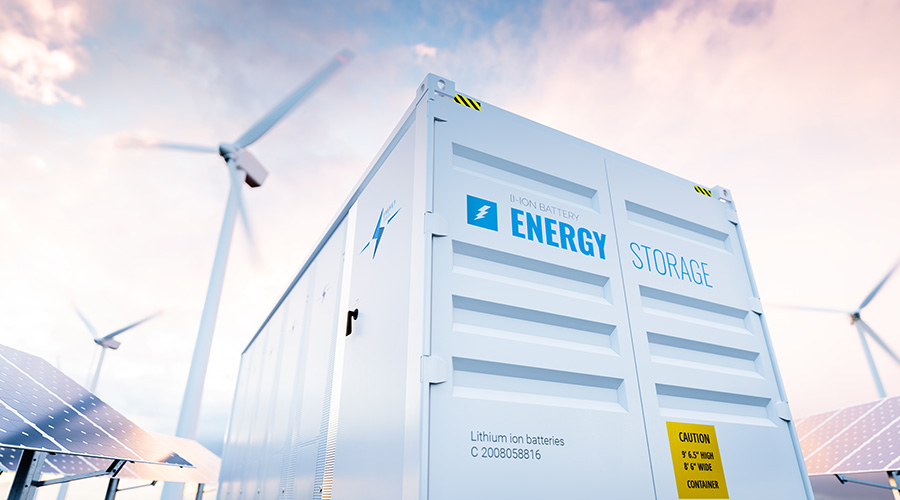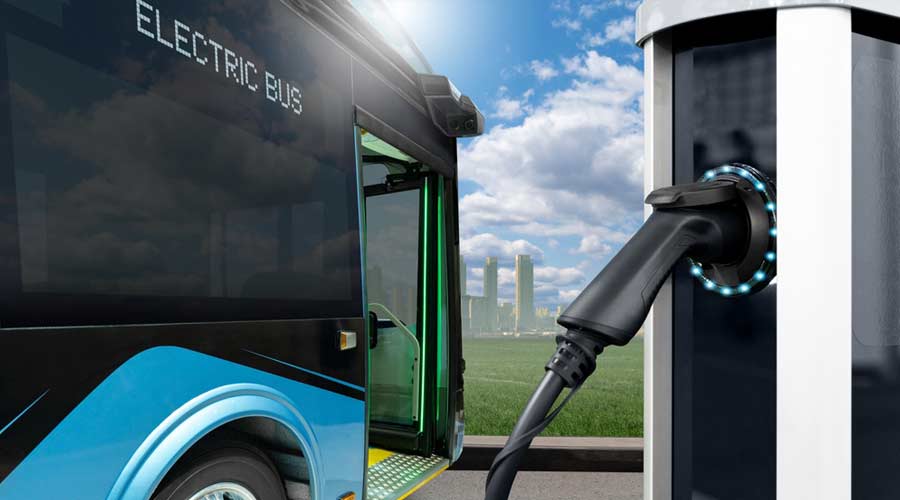Smooth Operations
LEED-EB is a blueprint for green operations and maintenance
By Greg Zimmerman, Executive Editor
Veteran facilities executives know that they don’t always get the credit they deserve. There will always be a less-than-progressive C-suiter who expects the facilities executive to be the out-of-sight, out-of-mind building conductor, and may only call when the air conditioning goes out in a corner office. But as energy costs skyrocket and organizations begin to take more than a cursory glance at green building strategies, facilities executives have one more opportunity to showcase how professional they, and their organizations, really are. Now is a perfect time to implement new or improve on existing facility strategies that will add value to the organization, position the organization as a caretaker of the environment and increase the credibility of the facilities department.
The U.S. Green Building Council’s Leadership in Energy and Environmental Design for existing buildings (LEED-EB) rating system gives facility executives a blueprint for doing just that. LEED-EB is a checklist of opportunities to help facilities executives make green operations and maintenance choices.
Upper management may still be skeptical of green building strategies, assuming extra expense or that green building’s only value is as a novelty. Part of getting a LEED-EB project off the ground, then, is getting organizational support.
“The first thing is to get company buy-in,” says Sheila Sheridan, vice chair of USGBC’s LEED-EB committee and former director of facilities at Harvard University’s Kennedy School of Government. “Usually, working toward LEED-EB certification starts as a goal in the facilities department.”
Preparing an executive summary that relates LEED-EB to the goals and culture of the organization should be the first step, says Sheridan. Whether the organization is concerned about energy costs or other environmental issues, such as waste reduction and recycling, water-use reduction, or the environmental impact of materials used throughout the building, the written executive summary should explicitly state how LEED-EB can address these organizational priorities. For instance, because most organizations emphasize their commitment to the health and productivity of staff, facilities executives can detail how a green cleaning program can improve indoor air quality and reduce the presence of potentially toxic chemicals in the building.
“It’s important to understand the psychology of the organization,” says Sheridan. “Tap into the values. What are the goals of the organization and where does LEED-EB fit into the CEO’s vision?”
Girvetz Hall, a recently certified building at the University of California, Santa Barbara, is a good illustration of the intersection of organizational goals and LEED-EB. The 46,000-square-foot facility that houses classroom space, offices and a large lecture hall was certified at the silver level in November 2005.
“We wanted to do a building we knew would be successful,” says Perrin Pellegrin, the university’s sustainability manager. “Girvetz had relatively simple systems and there was a great deal of buy-in from the occupants because the occupants were the university’s environmental studies program.”
Check it Out
Crossing the bridge from organizational goals to actual LEED-EB certification requires a bit of research into which green strategies should be used and which might be cost-prohibitive.
Experts recommend a formal assessment to identify how the facility is performing now and what needs to be done to bring the building up to certification level.
“We recommend a comprehensive sustainability audit before starting anything,” says Elaine Aye, principal of Green Building Services, a consulting firm that helps project teams navigate the LEED-EB rating system. “This is different than just the traditional energy audit. The comprehensive sustainability audit looks at how a building is operated and managed. How is the indoor air quality? Has it been commissioned? What are the chemicals coming into and going out of the building?”
The next step is to benchmark what is actually happening in the facility against what is required by LEED-EB, says Aye. This exercise will reveal where the building stands and what needs to be done to bring it up to LEED-EB standards.
For Adobe Systems, a long-time commitment to energy efficiency meant its headquarters complex was seemingly well-prepared for LEED-EB certification. The company’s San Jose, Calif., headquarters is a 950,000-square-foot, three-tower complex. Since 2001, the company has invested more than $1.1 million in energy efficiency improvements and reduced electricity use by 35 percent and natural gas use by 41 percent.
Despite Adobe’s eye on energy, when it conducted a building audit in preparation for the certification effort, it found plenty of opportunities for further improvement.
The company’s first project was the West Tower facility, built in 1996 at a time when Adobe was expanding rapidly. The building audit turned up more than expected.
“It was a design/build facility and there was a lot of pressure to get it built rapidly, so it had never been fully commissioned,” says George Denise, Cushman & Wakefield general manager of facilities for the Adobe headquarters complex. “We found several auxiliary air handlers were wired backwards, and there were more than 300 manual overrides in place in the HVAC system, so the system could not function as designed.”
As one way of addressing these problems, Adobe installed an integrated building monitoring and control system.
“It is a Web-based tool that lets us monitor real-time energy and water usage,” says Randy Knox, Adobe’s director of real estate, facilities and security. “We can more effectively control things like heating, lighting and air conditioning.”
The system also helps the company take part in Pacific Gas and Electric’s demand-response program that rewards organizations for scaling back energy use during periods of peak demand.
“The first time we had to shed, it took two engineers 45 minutes,” says Denise. “Now, with our control system, it takes one engineer 15 seconds.” Denise says the control system has saved Adobe about $175,000 just this year. The system was a major component of West Tower’s LEED platinum certification — the first building certified at the platinum level by version 2.0 of LEED-EB, the initial post-pilot version of LEED-EB. The other two towers in the complex are awaiting decisions on their LEED-EB certification as well.
The company also installed energy meters in 2004 that Denise says were a whim at the time, but have since paid dividends by helping the company standardize how it collects energy data. This data, as well as data derived from the control system, has helped the company benchmark.
Many facilities executives say the most difficult part of a LEED-EB project is collecting data in the format required by USGBC. While data collection does present a particular challenge, LEED-EB provides much guidance for how to do so, helping facilities executives get a handle on which particular metrics they may need to establish and what benchmarks for those metrics they need to meet. This helps smooth not only the certification process, but also the operation of the building by establishing a systematic benchmarking and data analysis program. Adobe used LEED-EB as a guide for collecting data, establishing metrics and analyzing benchmarks.
“We recommissioned all three buildings and in the process developed monthly reporting procedures to maintain optimum performance,” says Knox. “We are now practicing ongoing commissioning. In addition, we have established procedures with our service providers to provide monthly reports.”
“You have to standardize the data collection process and make it transparent,” says Aye. “That means finding a place for all data and systematizing the way it’s collected. The process should be as simple as possible.”
One way to do this is to include metric development as a part of the RFP to potential vendors or ask current vendors to help. Usually, they’re more than happy to help, says Sheridan, because once they’ve done it for one client, it gives them a competitive advantage or an additional selling point with other clients.
“Vendors know that customers love value-added services,” says Sheridan.
In addition to acting as a quasi-tutorial on data collection and metric development, LEED-EB also provides the framework for systematizing processes and procedures. That way, a certified building continues to operate in the sustainable way it did when it was certified.
“LEED-EB is a process, a roadmap,” says Sheridan. “You have to constantly go back and ask if you’re still on the right road.”
LEED-EB requires recertification at a frequency designated by the facilities team — at least every five years and at most every year. This forces facilities executives to stay the green course. Aye says implementing a complete environmental management system — a way to continuously track all environmental goals — is the key to keeping the facility on the right road.
Communication
Building occupants also are an important part of any successful LEED-EB initiative. Because a LEED-EB certified building is generally a healthier, cleaner environment, it’s logical to assume that occupants will be all for a LEED-EB program. But for them to be excited and be willing to help, they first have to know that LEED-EB is being implemented and be told what they can do to help. Often times, this education may double as a thinly veiled marketing campaign.
“Make LEED-EB a learning experience for occupants,” says Sheridan. “Communicate to them about what is going on. Send them something — a newsletter or e-mail — about what you’re doing and what their opportunities are to help, even in their own homes. Think about making the company a learning laboratory.”
At Girvetz Hall, occupant education was a key ingredient of the LEED-EB certification process.
“We got a booklet together, a resource guide,” says UCSB’s Pellegrin. “We got all occupants on board with our new sustainable purchasing policy, which included purchasing products with high recycled content. Some occupants didn’t know we had a university pest infestation manager. Now, if there is an ant infestation, the occupants know who to call instead of spraying potentially toxic chemicals all over the place.”
Education about an organizational LEED-EB initiative should go outward as well. As the general public seems to increasingly sympathize with organizations undertaking green strategies, many organizations are beginning to include information about their commitment to sustainability in their annual report.
“Facilities executives should ask for cost savings and soft cost benefits as a result of LEED-EB to be included in the annual report,” says Sheridan. “What will happen is that people will see it as a success story. You can then use that as the basis for other success stories.”
There are practical benefits to this outward education as well — higher occupancy in the case of the 19-story 200 Market Place building in Portland, Ore. That’s because LEED-EB illustrates that the building owner is concerned about occupants’ well-being, says Aye.
At 200 Market Place, LEED-EB certification was the brainchild of John Russell of Russell Development Corp., a rare developer interested in green building strategies.
Russell had been committed to greening the building for years, says Aye, who consulted to help the building achieve gold LEED-EB certification. The building was built in 1988 and Russell Development has since made continuous improvement.
Because 200 Market Place is a multitenant building — the only multitenant to be certified by LEED-EB — certification was a hook for potential tenants because it showed the developer’s commitment to a healthy building.
“Green education is key in a multitenant facility because when we communicate with them about maintaining good IAQ and using non-toxic materials, they know the owner cares,” says Aye. This goes for both current and potential tenants.
Aye says the building was 20 percent vacant prior to the LEED-EB certification, but afterwards, occupancy rose to 100 percent.
Communicating successes such as these wins the respect of occupants and gives upper management something to brag about to shareholders. It also changes the way that upper management perceives the facilities department.
“So often the facilities department is taken for granted.” says Sheridan. “LEED-EB provides them with an opportunity to show what they can do.”
About USGBC
The U.S. Green Building Council's core purpose is to transform the way buildings and communities are designed, built and operated, enabling an environmentally and socially responsible, healthy, and prosperous environment that improves the quality of life.
USGBC is the nation’s foremost coalition of leaders from every sector of the building industry working to promote buildings that are environmentally responsible, profitable and healthy places to live and work. The council’s more than 6,000 member organizations work together to develop a variety of programs and services, and forge strategic alliances with key industry and research organizations and federal, state and local government agencies.
|
The Goals of LEED-EB
According to the U.S. Green Building Council, LEED-EB is designed to address:
- Whole-building cleaning and maintenance issues including chemical use
- Ongoing indoor air quality
- Energy efficiency
- Water efficiency
- Recycling programs
- Facilities exterior maintenance programs
- Systems upgrades to meet green building energy, water, IAQ and lighting performance standards
|
Related Topics:











